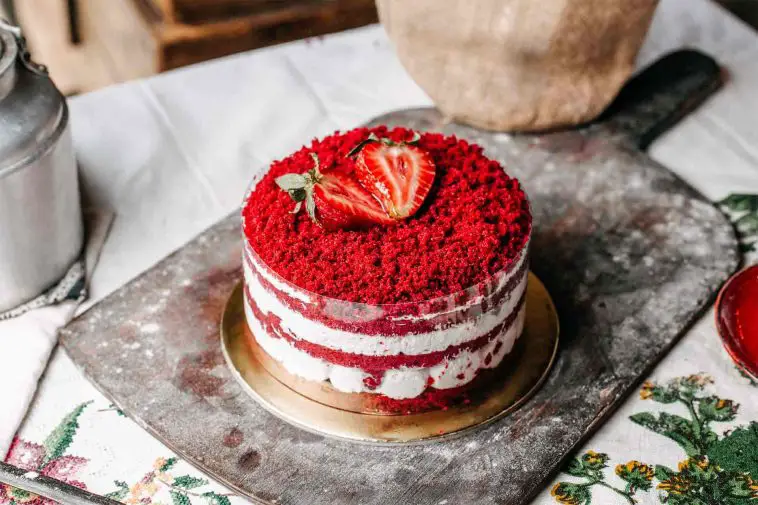Introduction to Gluten-Free Diets
Gluten, a protein found in wheat, barley, and rye, is a common ingredient in many foods. However, for individuals with celiac disease or gluten sensitivity, consuming gluten can lead to serious health issues, ranging from digestive problems to nutritional deficiencies. Consequently, a gluten-free diet becomes not just a lifestyle choice but a necessity for these individuals.
Choosing to go gluten-free can also be a personal preference for those seeking a healthier diet. Many people report feeling more energetic and less bloated when they eliminate gluten from their meals. Adapting your favorite recipes to gluten-free versions allows you to enjoy the foods you love while adhering to this dietary requirement. It’s about finding balance and alternatives that keep your meals both delicious and safe to consume.
Understanding Gluten-Free Flours
Transitioning to gluten-free cooking often starts with understanding the alternatives to traditional wheat flour. Here are some popular gluten-free flours and their characteristics:
- Rice Flour: Light and versatile, ideal for a variety of baked goods.
- Almond Flour: Rich in protein and adds a nutty flavor, perfect for dense, moist cakes and bread.
- Coconut Flour: Highly absorbent and lends a light, airy texture to baked goods.
Each flour has unique properties that affect the texture, taste, and structure of your dishes. Blending different gluten-free flours can often yield the best results. For instance, mixing rice flour with almond flour can balance moisture and provide a more traditional texture. It’s important to experiment and find the right combination that works for your specific recipe. Remember, gluten-free baking is an art of precision and creativity.
For more information on gluten-free flours, visit the Celiac Disease Foundation.
Substituting Gluten-Free Flours
Choosing the right gluten-free flour is crucial for successful gluten-free cooking. Different flours are suited for different types of recipes:
- For Breads and Pastries: A blend of rice flour and tapioca flour often works well, providing a balance between density and lightness.
- For Cakes and Muffins: Almond flour or oat flour can offer a moist and tender crumb.
- For Thickening Sauces: Cornstarch or potato starch are excellent choices.
When substituting gluten-free flours, it’s not always a simple one-to-one ratio. Gluten-free flours often require more or less liquid and can behave differently in terms of absorption and binding. It’s essential to adjust measurements accordingly. For instance, coconut flour is highly absorbent and usually requires more eggs or liquid to prevent dryness. Experimentation and adjustment are key in finding the perfect balance for each recipe. Additionally, gluten-free baking often benefits from a resting period before baking, allowing the flours to fully hydrate.
Learn more about blending flours at the Gluten Intolerance Group.
Incorporating Gluten-Free Binders
In gluten-free cooking, binders play a critical role in mimicking the texture and structure that gluten provides in traditional baking. Some effective gluten-free binders include:
- Xanthan Gum: A versatile binder that works well in breads and pastries to add elasticity.
- Eggs: Provide structure and moisture, essential in cakes and muffins.
- Chia Seeds or Flaxseeds: When mixed with water, they form a gel-like consistency, great for vegan recipes.
The amount and type of binder will vary depending on the recipe. For example, xanthan gum is used in very small quantities, typically a quarter to half a teaspoon per cup of flour. It’s important to not overuse it, as it can make the texture too gummy. Eggs, on the other hand, can add richness and color, especially in cakes and cookies. When using chia or flaxseeds as a binder, it’s best to pre-mix them with water and let them sit for a few minutes to form a gel before adding to the recipe. These binders not only replace gluten’s functional properties but also can add nutritional value to your dishes.
Adjusting Cooking Techniques
Adapting cooking techniques is essential in gluten-free cooking. Gluten-free doughs and batters often require different handling than their gluten-containing counterparts:
- Lower Baking Temperatures: Gluten-free baked goods often benefit from a slightly lower oven temperature to prevent over-browning or drying out.
- Altered Cooking Times: Some gluten-free recipes may cook faster, while others might need more time, especially breads and thicker batters.
It’s also important to consider the consistency of the batter or dough. Gluten-free batters are typically more liquid than traditional ones, which can be alarming at first but is normal. This consistency helps in achieving a moist end product. Additionally, gluten-free doughs are often stickier, so using wet hands or tools can help in handling. Patience and careful monitoring during cooking are key, as the visual cues for doneness might differ from gluten-containing recipes. Always use a toothpick or a cake tester to check the doneness of cakes and breads.
Using Gluten-Free Sauces and Seasonings
One of the trickiest aspects of maintaining a gluten-free diet is identifying hidden gluten in sauces and seasonings. Gluten can lurk in many store-bought sauces and seasonings, often under names like maltodextrin, soy sauce, and modified food starch. To ensure your meals are truly gluten-free:
- Read Labels Carefully: Always check the ingredient list for hidden sources of gluten.
- Look for Certifications: Products certified gluten-free are safe choices.
- Make Your Own: Consider making sauces and seasonings from scratch.
For safe and reliable options, brands like Tamari (for soy sauce), Bragg’s Liquid Aminos, and McCormick offer a range of gluten-free seasonings and sauces. These brands are known for their commitment to gluten-free products, providing peace of mind and flavor to your dishes.
Creative Gluten-Free Recipe Ideas
Transforming classic recipes into gluten-free versions can be a delightful culinary adventure. Here are some creative ideas:
- Gluten-Free Pizza: Use a cauliflower or almond flour base topped with your favorite ingredients.
- Gluten-Free Pasta Dishes: Substitute regular pasta with rice, quinoa, or legume-based pasta.
- Gluten-Free Baked Goods: Experiment with gluten-free flour blends for cakes, cookies, and bread.
For inspiration, try a gluten-free chocolate cake using almond flour for richness or a quinoa salad as a nutritious alternative to traditional pasta salads. The key is to embrace alternative ingredients and enjoy the process of discovery and innovation in your gluten-free cooking journey.
FAQs
- Can I use regular baking recipes and just substitute gluten-free flour?
- A: Yes, but it often requires adjustments in measurements and additional binders like xanthan gum or eggs.
- Is it expensive to cook gluten-free?
- A: It can be, but buying in bulk and choosing naturally gluten-free whole foods can help manage costs.
- Can gluten-free diets provide all necessary nutrients?
- A: Yes, a well-planned gluten-free diet can be nutritionally balanced. It’s important to include a variety of whole foods like fruits, vegetables, lean proteins, and gluten-free grains.
In conclusion, making your favorite recipes gluten-free requires some adjustments and creativity, but it’s entirely possible and can be quite enjoyable. Embrace the challenge and discover the vast world of gluten-free cooking!






Comments
Loading…